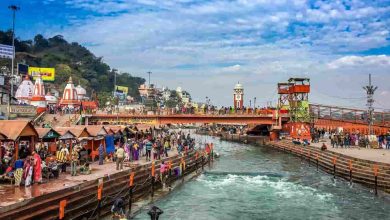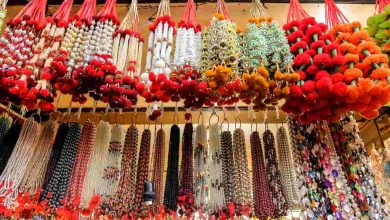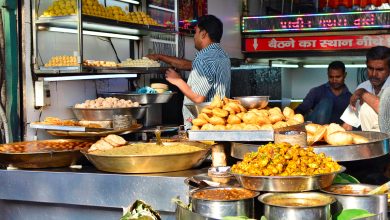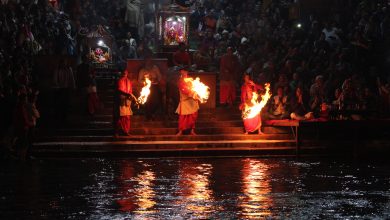Haridwar is the city where the river Ganga flows with grace amidst the soothing embrace of the Himalayan ranges. The sky is a kaleidoscope of colours, and the atmosphere is spiritually buzzing with chants and hymns of the Mighty God. You can see that the sky turns impressively golden in the evening and the mornings are equally refreshing and rejuvenating. Haridwar is one of the most important religious places in India and people are always interested to visit this holy place. So, when is the best time to visit Haridwar? Is it the winters, summers, or the enchanting monsoon? When is the right time to set foot here? Read on to find out!
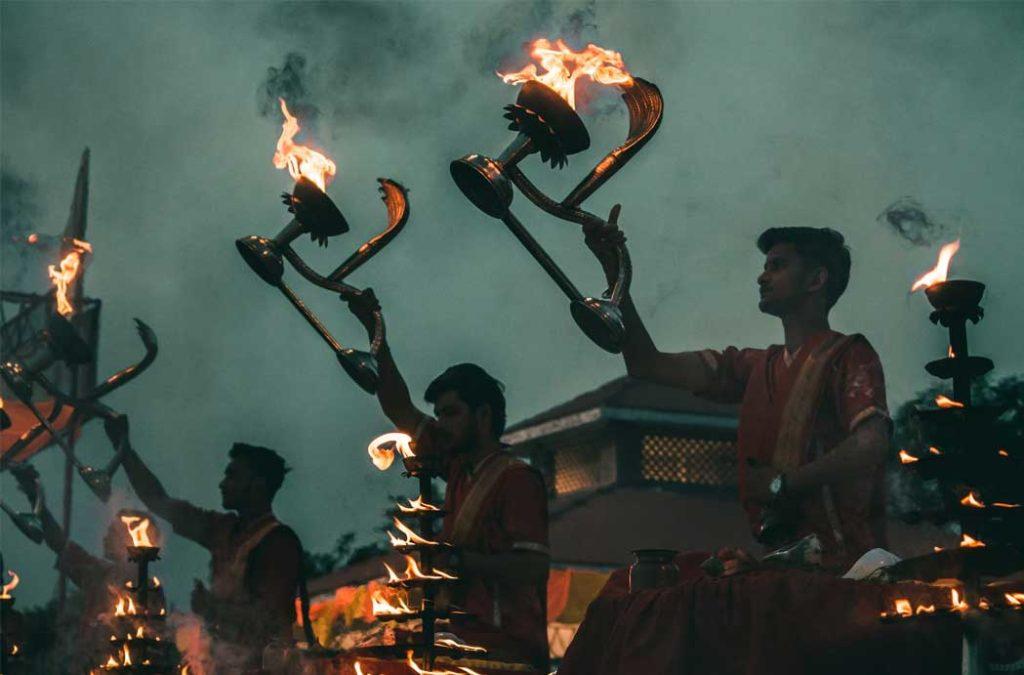
Haridwar has a distinct charm that will keep you captivated. Be it the glorious evening aarti on the ghats or the magnificence of the Hindu temples, visiting Haridwar is a once-in-a-lifetime experience that can change you for the good. Without any further delay, let us see how to plan your Haridwar Trip.
You May Also Like Reading: Sailing Towards Victory in 2023: Witness the Enchanting Kerala Boat Race This Season
[treebo_visual_elements header=”Book Budget Hotels in Haridwar” city=”Haridwar”]
The Best Time to Visit Haridwar
Haridwar is a city with much to offer everyone so it is common to wonder when would be the best time to visit it. To put all those confused minds at rest, we declare that Haridwar is a welcoming and enchanting place throughout the year! Whenever you can find time in your busy schedule, book the tickets and reach this city.
For the best accommodation options, place your bets on Treebo Hotels and you won’t be disappointed.
Each season has something new to offer; a bewitching experience that surpasses the previous one. The sacred fire is lit on all days and you can feel the palpable spiritual energy in the air. Sometimes, words fall short of describing the feeling of being in this ethereal place. The mystic charm of Haridwar appears in a different fashion during each season. While the summers are warm and cozy, the cold winter breeze will ruffle your hair, and the monsoons will cleanse your soul.
Here’s what you can expect in Haridwar during the different seasons-
The Hot Summer Months
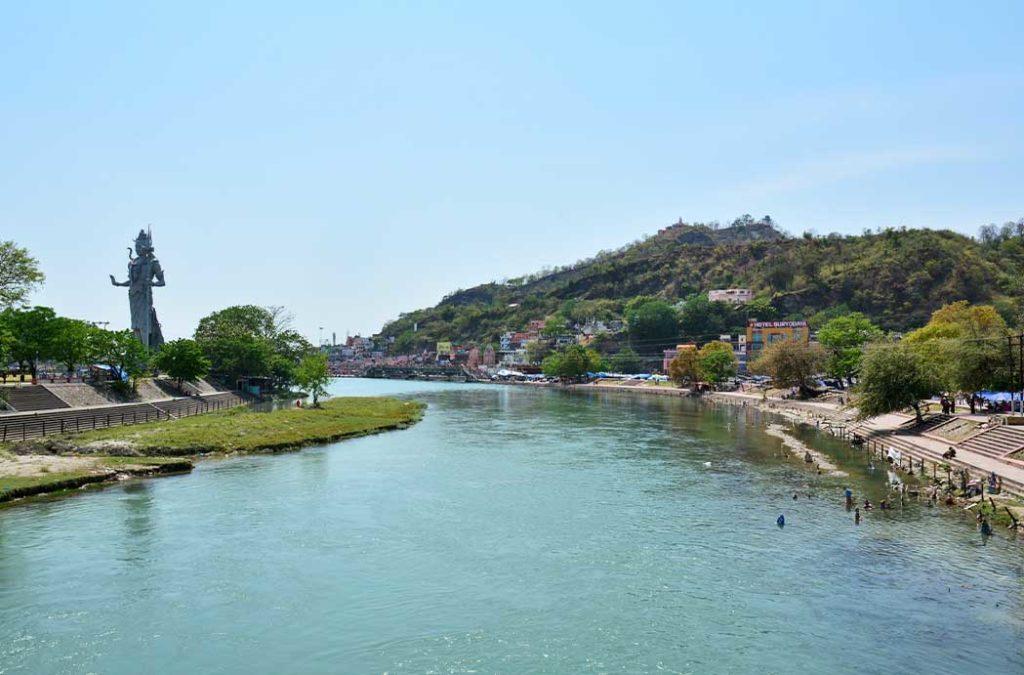
Haridwar is embraced by the Himalayan plains on all sides and the Ganga flows through the city. The temperature is expected to be anywhere between 20-40 degrees Celsius and the breezes from the riverside offer respite from the scorching heat during the day. Also, these breezes pick up the pace during twilight and the nights are comfortably cool and enjoyable. During Summer, you can visit the various temples in Haridwar during the day and come spend a silent evening by the Ganga Ghats. You can also take a refreshing dip in those waters. The entire place lights up beautifully after the sun goes down the horizon.
Summer is the best time to visit Haridwar if you want to be a part of the Ram Navami, Buddha Poornima, and Holi. Most importantly, Ganga Dussehra falls during the Summer months and the devotees come from across the country to offer prayers to River Ganga. Married women also do Vat Savitri pooja in Haridwar for the welfare of their husbands.
- Duration – March to June
The Cozy Winter Months
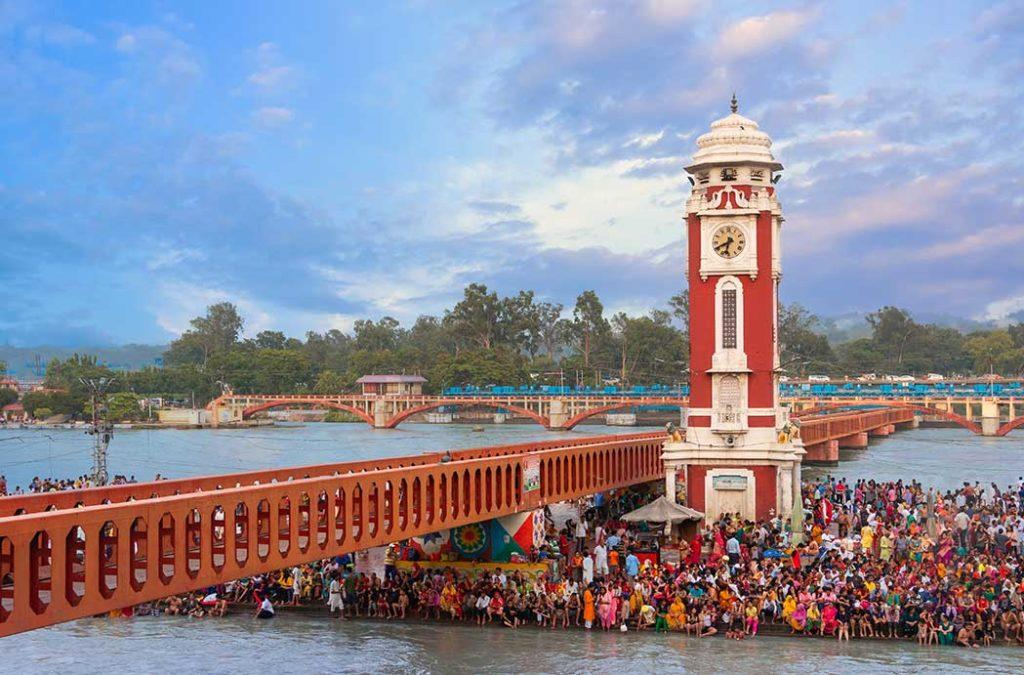
Winter is the best time to visit Haridwar for people who enjoy the cold breeze, swaying trees, and dense clouds that do not shower. This is how Haridwar looks during the cold months. The atmosphere is soothing and satisfying. Without the sun on your head, you can travel much more freely without feeling drained and dehydrated. Most of the pilgrims prefer to come to Haridwar during the Winter months so you can expect a significant crowd here during the season. The temperature can range anywhere between 6 to 25 degrees Celsius. The nights are colder and you will have to pack some warm woolens to combat the chill.
Winter is the best time to visit Haridwar for the Ganga Aarti. With the air carrying Sanskrit hymns, the warmth from the Aarti, and the rushing rhythm of the River Ganga, the entire experience is elevated to a whole other level and you can’t help but smile when it all tugs at your heart.
This is when the city celebrates Kartika Poornima and Diwali with great grandeur! The dates might differ every year but the events more or less fall during the winter months.
- Duration – October to February
The Spellbinding Monsoon Months
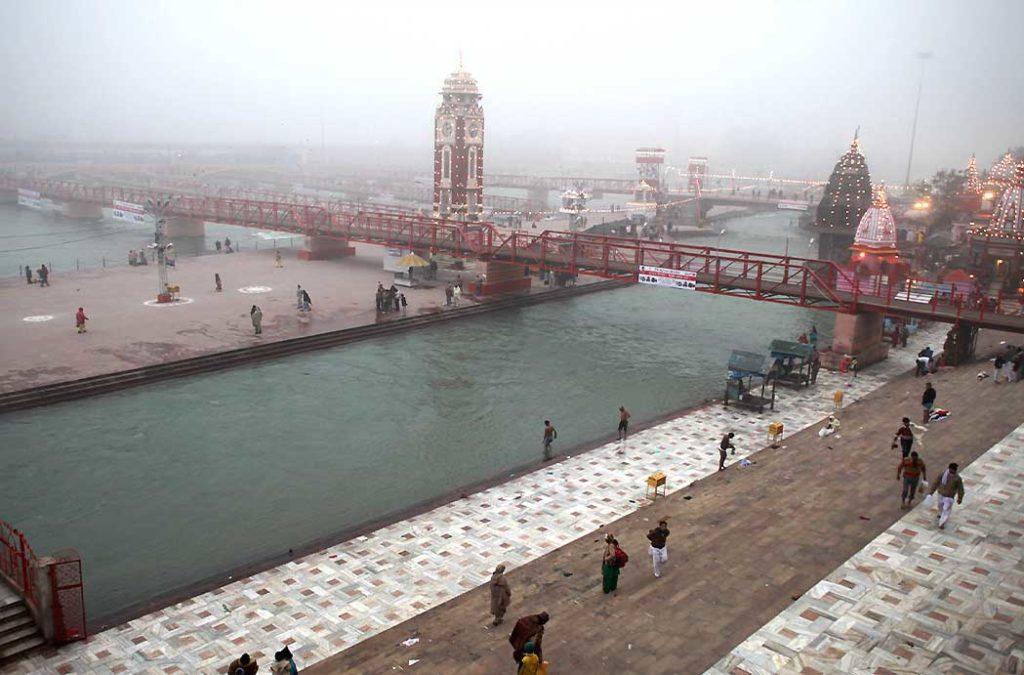
The city is quiet during the rainy days. If you are planning to avoid the crowd and enjoy the glory of the River Ganga all to yourselves, then Monsoons prove to be the best time to visit Haridwar. The weather is pleasant and the temperature remains between 15 to 25 degrees Celsius. The city receives moderate to heavy rainfalls, keeping the weather cold both during the day and night. Basant Panchami and Kanwar mela happen during the monsoon months.
But, you have to maintain caution when you are traveling to Haridwar during rainy days. The town is nestled amidst the Himalayan plains and monsoons become overwhelming. There can be landslides and roadblocks so always follow the news and be aware of the weather conditions before setting out on your journey. Early monsoon days are the best time to visit Haridwar because the rains will not have picked up pace yet.
- Duration – July to September
Important Temples to Visit in Haridwar
Haridwar has several important religious sites, temples with admirable history, holy grounds that will rid you of your sins, and of course, the cascading waters of River Ganga! Some would also say that Haridwar almost takes you closer to God and you can feel His presence on the streets.
If you are planning to visit Haridwar soon but won’t be staying there for long, here are the five important temples that you must visit at any cost. Now, that we know when is the best time to visit Haridwar, let us also explore the best places to see.
Har ki Pauri
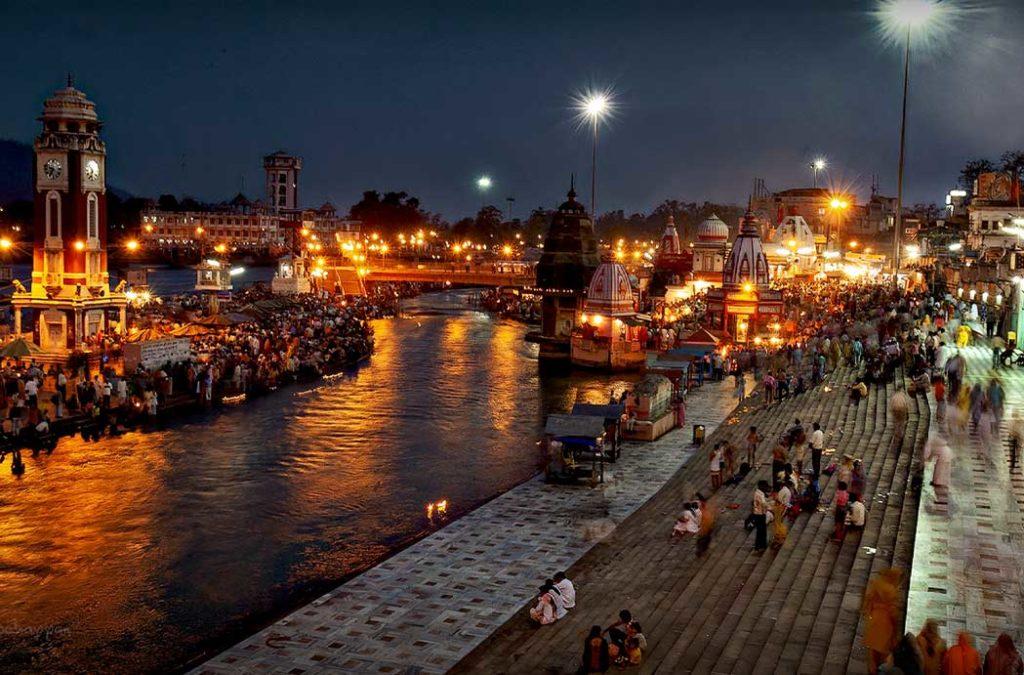
Har ki Pauri or Hari ki Pauri is not a temple but remains to be one of the most important sites in Haridwar. Har ki Pauri means ‘The feet of Hari/Vishnu/Narayan’. It is believed that when the demons and demigods were fighting for the nectar, a few drops of that liquid dropped in different places on Earth. All of these sites are today hailed as the most religious places in the country and Har ki Pauri is one of them. You will find the footsteps of Lord Vishnu on a stone here and it is strongly believed that the ones who seek his blessings by touching his feet imprints will be ridding themselves of all sins.
One more practice is to take a dip in the holy waters of the river Ganga near the ghat of Har ki Pauri. There are several other ghats along the river canal as well. You will find watchtowers around the region with skilled lifeguards monitoring tourist activities. If there are unforeseen accidents, they are always on their feet to help. Geographically, this is the place Ganga leaves the Himalayan mountains to take a detour toward the plains. Har ki Pauri is where you can witness Ganga Aarti in the evenings and early mornings.
Mansa Devi Temple
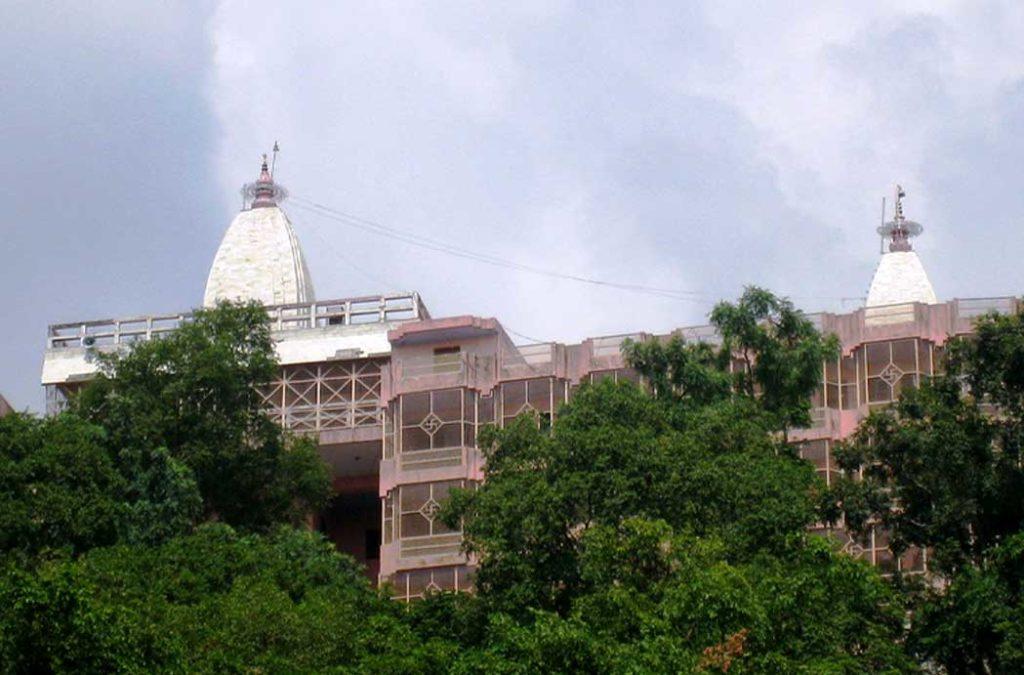
Mansa Devi Temple is dedicated to Goddess Mansa or Manasa. Her name means ‘ Wish or Desire’ and that is why she is believed to be the one who can fulfil all your wishes, and prayers. In Indian mythological history, she is believed to be the sister of the giant snake Vasuki and the daughter of the human incarnation of Lord Shiva. It is believed that she is the form of Shakti who originated from the mind of Lord Shiva.
The Mansa Devi temple is situated atop the Bilwa Parvat on the southernmost point of the Himalayan mountain range. People come here on foot and offer garlands, incense sticks, and diyas to the Goddess. There is a common practice where pilgrims tie a thread to a tree and make a wish. When that wish is fulfilled, they’d come back to remove the thread and thank the Goddess for all she had done for them. This is one of the most holy places in the country and thus, you must visit it whenever you come to Haridwar.
Chandi Devi Temple
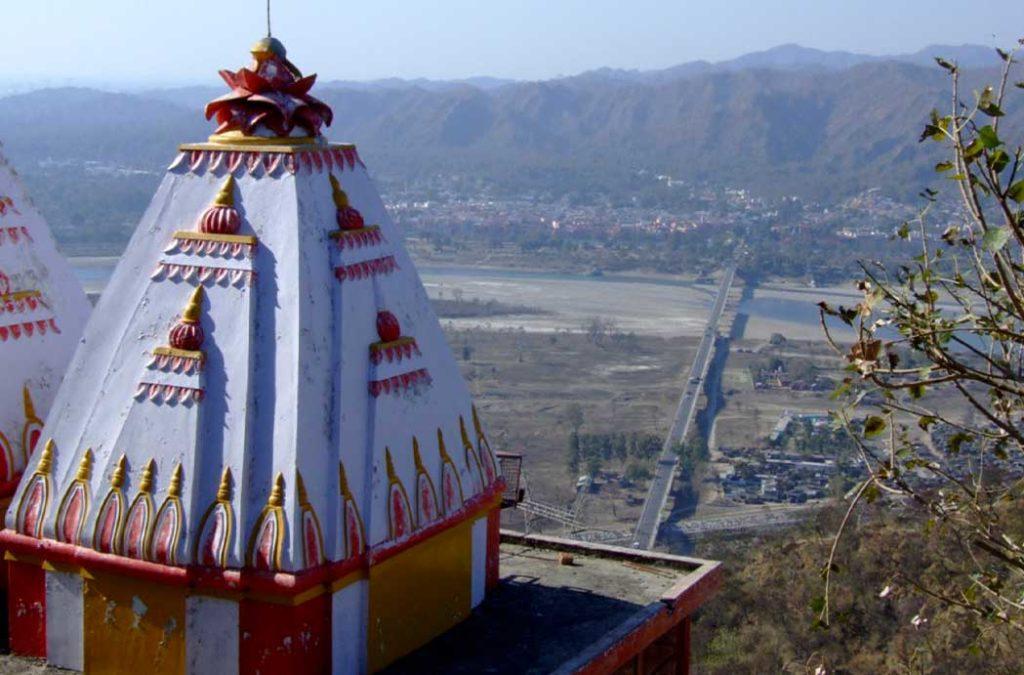
Maa Chandi Devi Temple sits atop the Neel Parvat in the Sivalik Hill range of the southern Himalayas. Once you are done seeking blessings at the Mansa Devi temple, head toward the Chandi Devi Temple. The presiding deity is Goddess Chandi who is beautiful, kind, and also the most fierce form of Goddess Parvati, Lord Shiva’s consort. She was the one who slayed the demons Chandi and Mundi along with their masters Shumbha and Nishumba. After the fight, she came to the Neel Parvat to rest and that is why her temple stands in the spot today.
The Goddess is known to fulfill the wishes of sincere devotees and offers protection and safety to the ones who believe in her. Along with Mansa Devi Temple and Maya Devi Temple in Haridwar, Chandi Devi Temple forms one of the three Siddhi Peeths – the temples where your heart’s desires will come true.
To reach the temples of Mansa Devi and Chandi Devi, you can either take a ropeway or go on a 4km trek that you must start at Chandighat. The path can get sloppy during rainy season so the best time to visit Haridwar for these two temples would be the winter and summer months.
Haridwar Jain temple
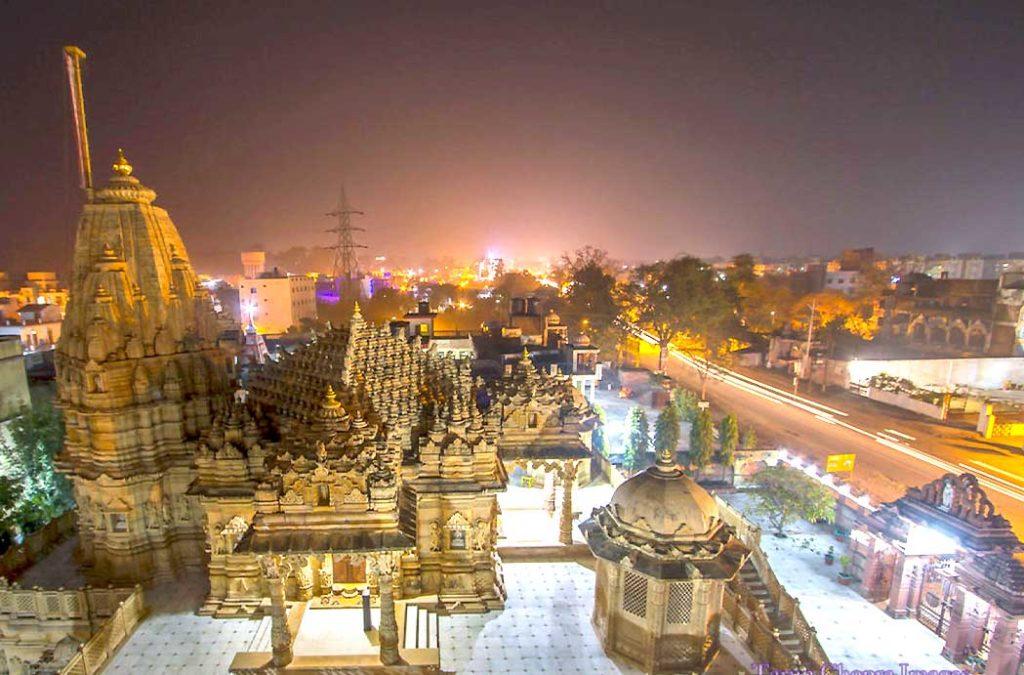
Shri Chintamani Parasnath Jain Shwetambar Mandir is one of the best places to visit in Haridwar if you are a fan of architectural marvels. Made of Jaisalmer stone, the entire temple showcases world-class Jain temple architecture with its pristine gold walls that shine beautifully when the sunlight falls on them. The temple consists of idols of different deities but the main sanctum sanctorum dedicated to Chintamani Parshwnath Bhagwan is on the first floor. He is accompanied by Shri Parshv Yaksh and Mata Padmawati Devi on either side. This is the temple that provided a spot for the Jain believers on the holy grounds of Haridwar.
People who meditate and prefer serene environments should come to visit the temple. There are dedicated spaces for meditation, rooms to stay in, and also a ‘Bhojanalaya’ or dining space. The food cooked and ingredients used will be according to the Jain religious beliefs. The place can accommodate a total of 1000 pilgrims at a time. The best time to visit Haridwar for this temple would be during the winter months.
Also Read: Rejuvenating Yoga Retreat in Rishikesh for the Serenity Seekers
Daksha Mahadev Temple
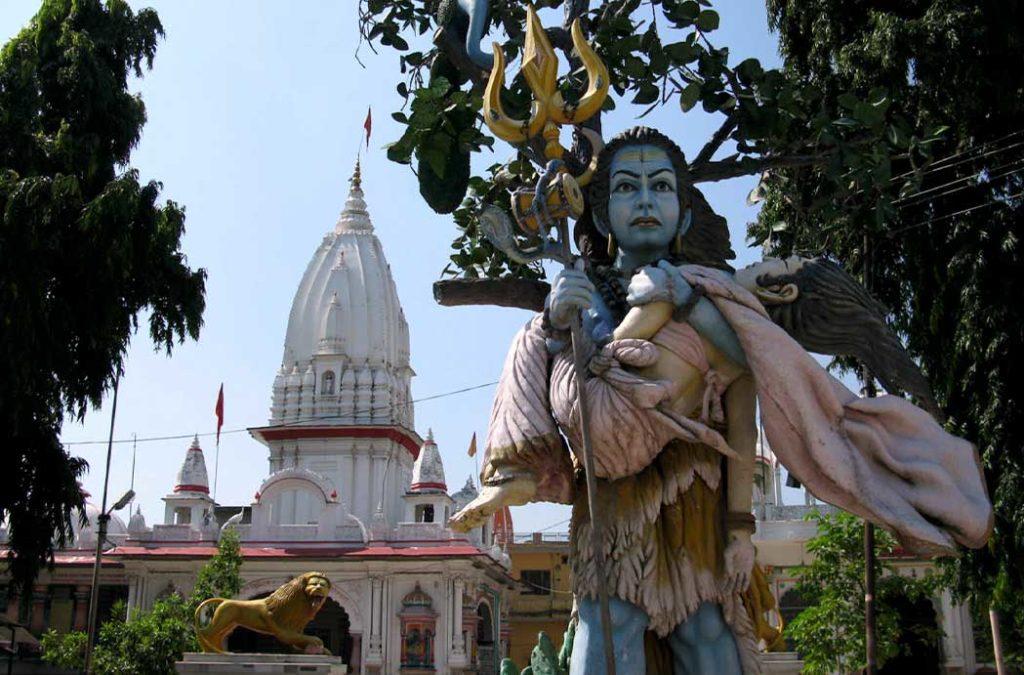
You will also hear people calling this the Daksha Prajapati Temple. He was the father of Goddess Sati, Lord Shiva’s consort and companion. Though the temple holds the idols of Lord Shiva, it is named after Daksha Prajapati. According to legend, Daksha made arrangements for a Yagna to which his son-in-law Shiva was not invited as he was averse to his ideologies and practices. When his daughter Sati came to be a part of the prayers, he insulted her husband which greatly hurt her feelings. She jumped into the holy fire of the yagna and freed herself from the life where she will always be known as ‘Daksha’s daughter’.
Lord Shiva then in anger sent Virabhadra to slay the head of Daksha. After a lot of requests from the other Gods and Daksha’s family, he brought Daksha Prajapati back to life with a goat’s head.
He greatly repented for his actions and spent the rest of his life in peace and prayers. Lord Shiva said that he would always come back to Kankhal, the spot where the yagna was organized, during the saavan months. This is where the temple is now constructed – on the southern part of Kankhal.
Devotees believe that coming to this temple will rid them of sins and the pilgrim crowd is more during the monsoon months and Kartika Poornima.
The best time to visit Haridwar is when you feel the beckoning from the flowing Ganga, residing deities, and the pristine holy atmosphere. Without any further thought, book your tickets and enjoy the grandeur of this holy city!
